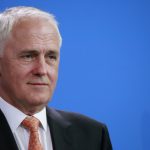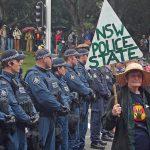People Power in Paris: Government Backs Down Over Tax Hikes

On 1 December, Paris was burning. Six buildings were set ablaze. Restaurants and shops were looted. Around one hundred cars were engulfed in flames, some overturned as they burned. And the Arc de Triomphe was graffitied with anti-government sentiment.
The rioters were initially protesting increasing fuel taxes, but by the third Saturday of demonstrations, the Yellow Vest Movement – locally known as the Mouvement des Gilets Jaunes – had broadened the focus of its grievances to shrinking incomes in the face of the rising cost of living.
A leaderless grassroots movement, the Yellow Vests organised via social media. The 10,000 protesters that converged on Paris on the first of the month were mainly from the provinces and outer suburbs. And similar protests were carried out in metropolitan centres across the country.
Last Saturday marked the fourth day of protests. The demonstrators took to the streets once more, even though French president Emmanuel Macron had met their initial demands and backed down on new fuel taxes. Now mobilised, the Yellow Vests assert this isn’t enough.
And as “Act V” of the protests is likely to take place this Saturday, local activists in this country have been taking to social media and suggesting that Australians could learn something about achieving social change from the French and their long tradition of forceful protests.
Tipping their hat to the one percent
The protests were sparked by tax hikes on fuel that were approved late last year, along with a rise in oil prices in October. Petrol rose by 3.9 cents a litre, while diesel went up by 7.9 cents. And further tax increases on fuel were set to take effect on 1 January.
The Macron government said the taxes were being imposed to make petrol and diesel run vehicles less economically viable. This would push people into using electric cars and cut emissions in an effort to slow climate change.
However, these spikes in fuel prices – which disproportionately affect those on lower incomes – came into effect after the government slashed a tax on the nation’s wealthiest citizens that was first introduced by then president Mitterrand back in 1982.
French citizens living in the provinces and on the outskirts of cities were outraged by the rise in fuel prices as they have no choice but to rely on their vehicles given the lack of public transport options. And the prospect of simply buying a new electric car is not a possibility for most.
The government buckles
In October, a group of truck drivers in France created a Facebook event calling on people to converge on the Champs-Elysées and block the streets of Paris to demonstrate against the rising fuel prices.
On 17 November, 300,000 people nationwide took part in the first day of protests. The demonstrators wore the fluorescent yellow vests all French citizens are required to carry in their cars in order to wear in the case of a roadside breakdown.
On the day following the initial demonstrations, the French prime minister Edouard Philippe announced the government wouldn’t back down. So, on the next Saturday, the Yellow Vests took to the streets once more.
The third Saturday of protests saw the most widespread violence. And on 4 December, the government backed down. It announced that planned tax increases in January would be suspended for six months. And then on the following day, Macron said the 2019 tax hikes would be scrapped.
Lessons learnt in Paris
It’s not that the Yellow Vest protesters are climate change deniers. Their issue is that while they rely on vehicles that run on fuel, and they don’t own electric cars, the government is taxing them further and they’re not seeing any benefits. And meanwhile the richest citizens have been given a break.
Andreas Malm wrote in Verso that cars must be taken off the road, but a better way to achieve that would be to invest in public transport in both urban and rural areas, as well as focusing on alternative forms of transport and prohibiting the use of private fossil-fuelled cars in cities.
And according to Malm, what the Paris demonstrations have taught us about “progress on the climate front” is that it will happen through struggle: “blocking traffic, walking out of schools, seizing central streets” and “attacking the most environmentally damaging of all forms of consumption”.
Further gains won
Recent polls have shown that between 70 to 80 percent of French citizens support the Yellow Vests. And at times during the protests, the police actually removed their headgear and stood alongside the demonstrators.
There were 89,000 police officers deployed nationwide at last Saturday’s protests, with 8,000 in Paris alone. Again, the Yellow Vests fought street battles with riot police and severe damage to property was carried out.
In another turnaround, president Macron announced on Tuesday that there would be wage rises for the poorest workers in the country. And this would not affect employers, as the government is going to top up their salaries.
And the president also stated that there would be tax cuts for pensioners earning less than 2,000 euros. But, Macron refused to reinstate the wealth tax or backdown on an overhaul of pensions and unemployment benefits planned for next year.
Stamping out dissent
Last Saturday, thousands of demonstrators took to the streets in Sydney to protest against the proposed Carmichael mine in Queensland, after Indian mining giant Adani announced last month it will be self-funding a scaled-down version of the coalmine.
And it’s likely more demonstrations will take place against the mine, which will further intensify climate change. However, despite what activists have been suggesting on Facebook, it’s unlikely these protests would ever go as far as those seen on the streets of Paris.
Indeed, if any protests did reach the sort of scale that has been occurring in France, the government would simply send in the special forces, as just a fortnight ago laws were passed that allow the army to be sent in to quell a protest if there’s a “reasonable likelihood” of “serious damage to property”.







